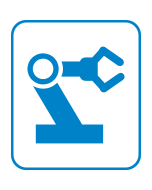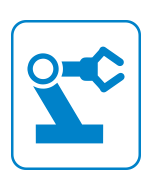Robotic Exoskeletons: Roadmapping and Impact Analysis
Robotic Exoskeletons: Roadmapping and Impact Analysis
Physical Rehabilitation Drive Growth Opportunities
31-Dec-2018
Global
$4,950.00
Special Price $3,712.50 save 25 %
Description
Increased awareness and research initiatives of robotics technologies improving human life and intelligence have created opportunities for robotic exoskeleton manufacturers’ to discover a wide range of applications across various industry sectors. Efficient human-robot interaction, reduced footprint, ease of integration, reprogramming ability, and creation of flexible environment are encouraging advancements in robotic exoskeletons.
Robotic platforms are expected to have a key role in driving automation. Apart from automating the working environment, the adoption of exoskeletons will ease humans associated with dangerous and hazardous tasks. In the healthcare industry, robotic exoskeletons are expected to play a key role in offering effective physical rehabilitation and elderly care solutions.
Research focus areas include: development of robotic exoskeletons for limb and fall control, joint movement assistance, methods of communication and control mechanisms, human machine interface, user synchronization, and pressure detection.
The scope of this technology and innovation report is limited to robotic exoskeletons based on its applicability in healthcare, manufacturing, military and construction sector. This report focuses on providing a snapshot on the key impact of exoskeletons from a sector, social, and economic level. A global patent and funding assessment on the technology development is included in the report along with key innovations and growth opportunities for robotic exoskeletons. A global analysis on the current development of robotic exoskeleton technologies was done to assess the disruptive opportunities of exoskeletons.
Key questions addressed in the research service:
1. What are the key emerging applications which will have a high impact in the adoption of robotic exoskeletons?
2. What are the benefits and challenges of robotic exoskeletons?
3. What are the key innovations impacting technology development?
4. What are the patent trends witnessed in the robotic exoskeleton area?
5. What are the key focus areas of technology development?
6. What are future growth opportunities?
Table of Contents
1.1 Research Scope
1.2 Research Methodology
1.3 Research Methodology Explained
1.4 Summary of Key Findings
1.4 Summary of Key Findings (continued)
2.1 Visualization in the Manufacturing Sector – A Sneak Preview
2.2 Types of Robotic Exoskeleton Technologies
2.3 Market Drivers: Growing Trend Toward the Utilization of Robotics Technologies
2.4 Benefits of Robotic Exoskeletons Encouraging technology Development
2.5 Market Challenges: Cost, Misuse of Technology and Research Funding are Considered to be the Primary Factors
2.6 High Cost of Robotic Exoskeletons Hindering Adoption
3.1 Manufacturing and Construction Sector Employees can Improve Productivity and Reduce Injury Risk Using Exoskeletons
3.2 Rehabilitation is One of the Key Applications in Healthcare and Military and Defence
3.3 Economic Impact of Robotics Exoskeletons
3.4 Social Impact of Robotics Exoskeletons
4.1 Global Patent Trend Analysis
4.2 Gap Analysis and Funding Trends
5.1 Key Innovators in Robotic Exoskeleton Ecosystem
5.2 Medical Exoskeletons Designed for Mobility Disorders
5.3 Powered Exoskeletons for Rehabilitation
5.4 Bionic Walking Assistance Exoskeletons
5.5 Bionic Suit for Lower Limb Support
5.6 Dexterous Mobile Robotic Exoskeleton
5.7 Powered Exoskeletons with Improved Flexibility and Reactivity
5.8 Bionic Knee Braces to Prevent Knee Injuries
5.9 Medical Exoskeletons for Lower Body Paralysis
5.10 Leg Protection Bionic Suits for the Marine Industry
5.11 Modular Robotic Exoskeleton for Rehabilitation of Limbs
5.12 Powered Clothing Design to Supplement Users’ Everyday Strength
5.13 Exoskeletons Suitable for Everyday Life
6.1 Robotic Exoskeletons to Witness Wide Adoption in the Long Term
6.2 Healthcare and Manufacturing Sectors to be the Early Adopters
6.3 Military & Defence and Building & Construction Sectors will Adopt the Technology
7.1 Improvement in Worker Performance and Performing Complicated Tasks are Some of the Key Opportunities
7.2 Advancement in Physical Rehabilitation Will Encourage Technology Development
7.3 Increased Adoption of Robotics Solutions Creates Opportunities
8.1 Industry Contacts
Legal Disclaimer
Popular Topics
| No Index | No |
|---|---|
| Podcast | No |
| Author | Jabez Mendelson |
| Industries | Industrial Automation |
| WIP Number | D88A-01-00-00-00 |
| Is Prebook | No |
 USD
USD GBP
GBP CNY
CNY EUR
EUR INR
INR JPY
JPY MYR
MYR ZAR
ZAR KRW
KRW THB
THB




